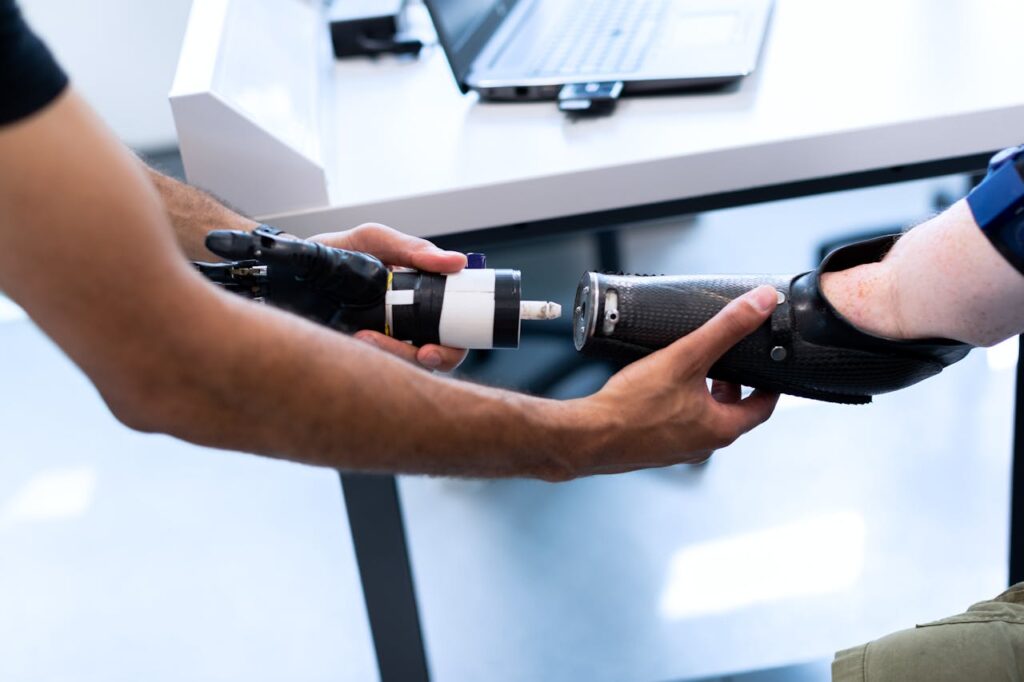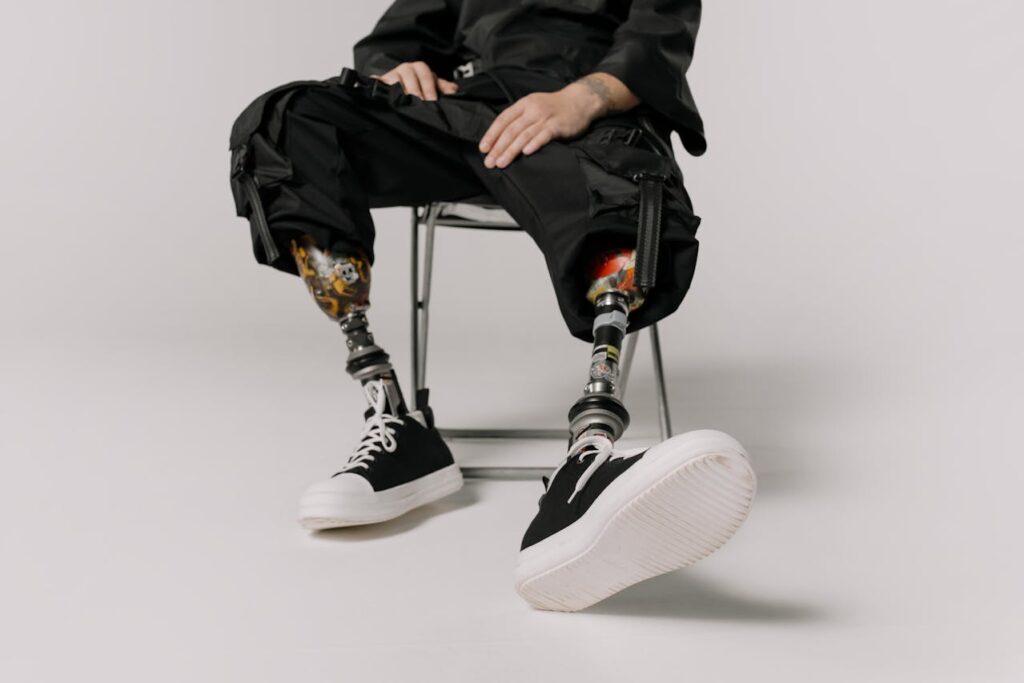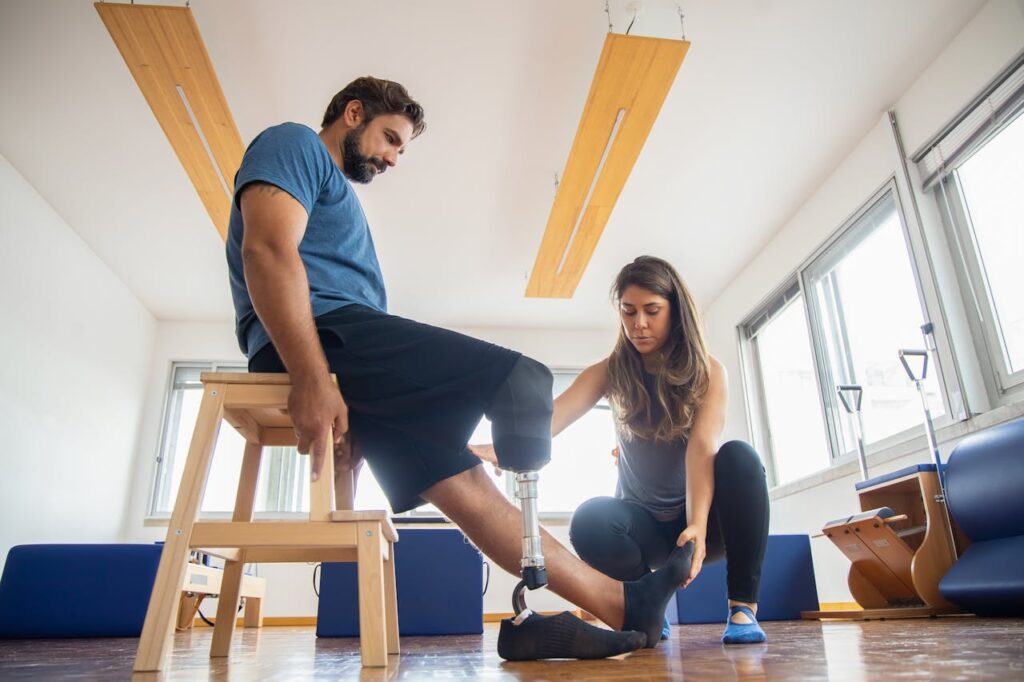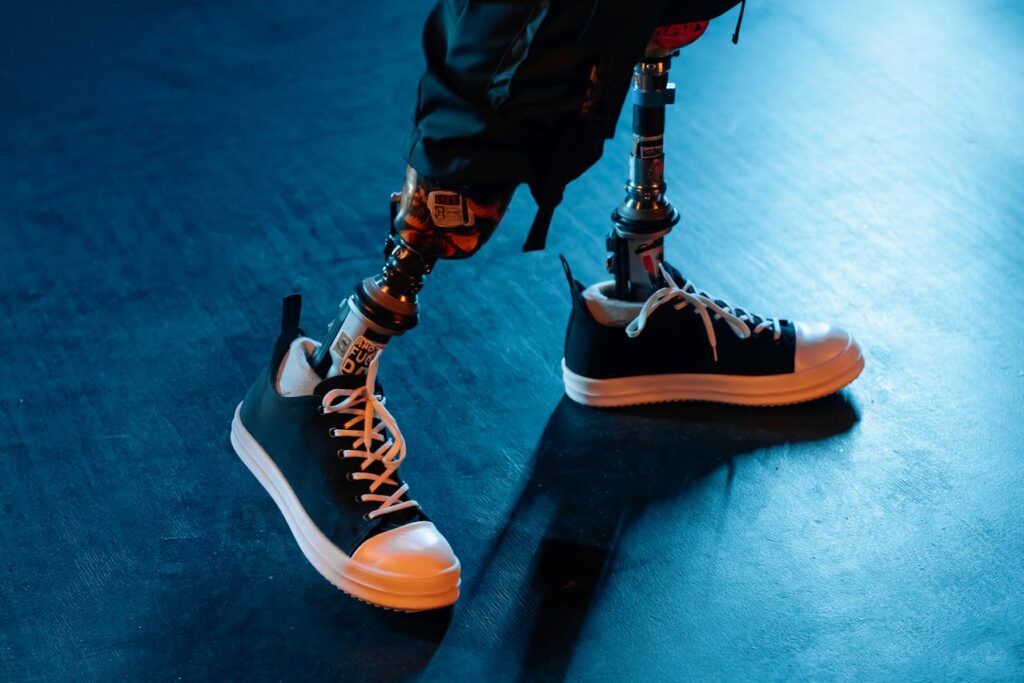Prosthetic limbs are much more than mobility aids—they are life-enhancing tools that restore independence and enable users to engage in daily activities with confidence. However, not all prosthetics are built to handle every environment. For individuals who frequently encounter water, whether during work, recreation, or daily routines, waterproof prosthetic limbs offer unparalleled convenience and functionality.
Understanding who benefits most from waterproof prosthetics and the reasons behind their importance is essential for making informed decisions. This article explores the unique features of waterproof prosthetic limbs, the people who need them most, and the transformative role they play in enhancing mobility and lifestyle.
The Evolution of Waterproof Prosthetic Technology
Waterproof prosthetics are a response to the limitations of traditional devices. While conventional prosthetics are designed for land-based mobility and activities, exposure to water can damage components, degrade performance, and lead to discomfort. Waterproof designs overcome these challenges by integrating materials and mechanisms that function seamlessly in wet environments.
The Difference Between Water-Resistant and Waterproof
A common point of confusion is the distinction between water-resistant and waterproof prosthetics. Water-resistant prosthetics can handle occasional splashes or brief exposure to moisture but are not designed for full submersion.
Waterproof prosthetics, on the other hand, are engineered to withstand prolonged contact with water, whether in a swimming pool, the ocean, or a rainy environment.
For users who need complete freedom around water, the waterproof option is indispensable. These devices are crafted with sealed joints, corrosion-resistant materials, and robust mechanisms that maintain performance under challenging conditions.

The Role of Materials in Waterproof Design
The materials used in waterproof prosthetics are critical to their functionality. Metals like titanium and stainless steel resist rust and corrosion, while durable plastics and silicone components prevent water penetration.
Additionally, advanced sealing technologies ensure that water cannot enter sensitive areas, such as electronic joints or sockets.
Businesses focused on manufacturing waterproof prosthetics must prioritize the selection of these high-performance materials. Highlighting these features during user consultations or marketing efforts can help potential buyers understand the durability and long-term benefits of these devices.
From Basic Protection to Seamless Performance
The earliest attempts at water-resistant prosthetics were limited in scope, providing partial protection from moisture but failing to deliver true waterproof functionality.
These devices often relied on external coverings or coatings that were cumbersome to apply and degraded over time. While they offered some utility, they lacked the robustness and adaptability required for prolonged exposure to water.
Modern waterproof prosthetics represent a paradigm shift. Today’s designs integrate water-resistant features at a fundamental level, with sealed joints, corrosion-resistant materials, and hydrophobic coatings that ensure durability and performance in a wide range of conditions.
This evolution has been spurred by feedback from users seeking prosthetics that can handle their daily routines, recreational activities, and professional demands without interruption.
Integration of Advanced Materials
One of the key milestones in the evolution of waterproof prosthetics has been the adoption of advanced materials. Metals like titanium and stainless steel, known for their strength and resistance to corrosion, have become standard components in these devices.
At the same time, lightweight polymers and silicones have been engineered to create watertight seals, ensuring that sensitive components remain protected even during submersion.
For businesses, investing in the development and sourcing of these materials is critical. Manufacturers can benefit from forming partnerships with suppliers specializing in high-performance alloys and plastics, ensuring that their products meet rigorous quality and durability standards.
Additionally, educating users about the materials used in their prosthetics builds trust and confidence, reinforcing the value of these innovations.
Leveraging Engineering Precision
The evolution of waterproof prosthetics has also been marked by advancements in engineering precision. Complex sealing mechanisms, such as O-ring gaskets and ultrasonic welding, now ensure that water cannot penetrate critical areas like electronic joints or sockets.
These innovations have been especially transformative for smart prosthetics, which incorporate electronic components that require robust protection from water and humidity.
For businesses, prioritizing engineering excellence in the design phase is essential. Collaborating with engineers who specialize in waterproofing technologies or investing in R&D to develop proprietary sealing techniques can differentiate a brand from its competitors.
Highlighting these technical achievements in marketing efforts can also position the company as a leader in innovation and reliability.
Who Benefits from Waterproof Prosthetics?
While anyone can appreciate the convenience of a waterproof prosthetic, certain individuals benefit significantly more from this innovation due to their unique lifestyles, professions, or hobbies.
Active Outdoor Enthusiasts
For individuals who enjoy outdoor activities such as swimming, kayaking, or fishing, waterproof prosthetics open up a world of possibilities. These users often encounter unpredictable environments, including wet terrain or water-based recreation, where traditional prosthetics might fail.
Waterproof designs ensure that users can participate fully without worrying about damaging their device or compromising safety. For businesses, catering to this demographic involves understanding their needs and designing prosthetics that balance durability with lightweight, ergonomic construction.
Professionals in Wet Environments
People working in professions that involve regular exposure to water, such as lifeguards, fishermen, or marine workers, rely on prosthetics that can withstand their demanding conditions.
Waterproof prosthetics not only enhance job performance but also ensure that users can work confidently without interruptions caused by equipment failure.
For businesses, emphasizing the reliability of waterproof prosthetics under professional conditions can resonate strongly with this audience. Offering customized solutions tailored to specific industries further strengthens trust and credibility.

Parents and Caregivers
Parents and caregivers, particularly those with young children, often find themselves in situations where water exposure is unavoidable. From giving baths to participating in poolside activities, waterproof prosthetics allow them to stay engaged without limitations.
For businesses, recognizing this group as a key demographic and sharing relatable user stories can highlight how waterproof prosthetics enhance family life.
The Everyday Convenience of Waterproof Prosthetics
Waterproof prosthetics aren’t just for extreme activities or professional use—they offer immense value in everyday life. For many users, the ability to navigate wet environments without concern transforms mundane tasks into stress-free experiences.
Independence in Daily Routines
Daily activities such as showering, washing dishes, or walking in the rain can be challenging for individuals with traditional prosthetics. Waterproof designs eliminate the need for constant removal or additional protective covers, providing users with independence and confidence.
For example, a lower-limb waterproof prosthetic allows users to transition from a workout to the shower seamlessly, while an upper-limb device can handle splashes during meal preparation. For businesses, emphasizing these practical benefits appeals to users who prioritize convenience in their everyday lives.
Enhancing Travel Experiences
Travel often involves encounters with water, from visiting the beach to exploring rainy destinations. Waterproof prosthetics ensure that users can fully enjoy these experiences without being restricted by their device. The ability to swim, wade through water, or walk on wet surfaces enhances the freedom and enjoyment of travel.
For businesses, marketing waterproof prosthetics as essential travel companions can capture the attention of users who lead active, adventurous lives. Sharing testimonials or case studies from travelers who have benefited from these devices adds a personal and relatable touch.
Key Features to Look for in Waterproof Prosthetics
Selecting the right waterproof prosthetic involves understanding the features that make a device truly effective in wet environments. Advanced materials, functional designs, and thoughtful engineering all play a role in delivering a superior experience.
Durable and Corrosion-Resistant Materials
Waterproof prosthetics must withstand constant exposure to water without degrading. Components made from materials like titanium, stainless steel, and marine-grade plastics ensure durability and resistance to rust or corrosion. Silicone liners and seals further enhance the device’s ability to repel water and maintain functionality over time.
For businesses, educating users about the materials used in their prosthetics highlights the value and longevity of the product. Including technical details or certifications in promotional materials can also build trust and credibility.

Advanced Sealing Technology
One of the most critical aspects of a waterproof prosthetic is its ability to prevent water from entering sensitive areas, such as electronic components or the socket interface.
Advanced sealing technologies, such as rubberized gaskets or watertight connectors, ensure that the device remains operational even when submerged.
For users who rely on smart prosthetics with electronic features, the assurance that their device is fully protected is paramount. Businesses that invest in robust sealing solutions can position themselves as leaders in innovation and reliability.
Lightweight and Ergonomic Design
While durability is essential, a waterproof prosthetic should also be lightweight and easy to wear. Overly heavy or cumbersome devices can strain the user and reduce overall comfort. Ergonomic designs that prioritize balance and flexibility ensure that the prosthetic feels natural, even during extended use in water.
For businesses, emphasizing the balance between strength and comfort in their designs appeals to users seeking both performance and ease of use. Offering trial periods or demonstrations allows potential buyers to experience these benefits firsthand.
Innovations Driving the Future of Waterproof Prosthetics
The field of waterproof prosthetics is evolving rapidly, with innovations that enhance functionality, comfort, and durability. These advancements are redefining what users can expect from their prosthetic devices, making them more versatile and user-friendly than ever before.
Smart Waterproof Prosthetics
Smart technology has found its way into waterproof prosthetics, enabling features like activity tracking, personalized settings, and even real-time feedback. Users can now monitor their device’s performance through companion apps, adjusting resistance or grip strength as needed, even in wet environments.
For example, a waterproof lower-limb prosthetic equipped with sensors can detect water resistance during swimming and adjust accordingly to ensure smooth, natural movements. Upper-limb devices might include touch sensors that function underwater, allowing users to manipulate objects with precision.
For businesses, integrating smart features into waterproof designs offers a competitive edge. Highlighting these innovations in marketing materials and demonstrating their practical applications builds excitement and trust among users.
Enhanced Grip and Traction
For users navigating slippery surfaces, grip and traction are critical. Waterproof prosthetics now feature specialized soles, treads, or coatings that mimic the anti-slip properties of natural skin. These enhancements provide stability and safety, whether users are walking on wet tiles, riverbeds, or sandy beaches.
For businesses, showcasing how these features improve safety and usability can resonate strongly with users who prioritize confidence in their movements. Sharing visual demonstrations, such as videos of the prosthetic in action on various surfaces, adds credibility and impact.

Modular Designs for Versatility
Modular waterproof prosthetics offer users the flexibility to adapt their device for different activities or environments. For instance, a lower-limb prosthetic might include interchangeable feet designed for swimming, running, or hiking. These modular options allow users to maximize the value of their prosthetic while ensuring it meets their diverse needs.
For businesses, offering customizable solutions demonstrates a commitment to user-centric design. Encouraging users to select components that align with their lifestyle reinforces the idea that their prosthetic is uniquely tailored to them.
Addressing Challenges in Waterproof Prosthetic Design
While waterproof prosthetics offer significant benefits, they also come with unique challenges that manufacturers must address to deliver reliable and user-friendly devices.
Balancing Waterproofing and Breathability
Creating a prosthetic that is fully waterproof without sacrificing breathability can be complex. A sealed device may trap heat or moisture inside, leading to discomfort or skin irritation. To address this, manufacturers are incorporating moisture-wicking materials and venting systems that maintain comfort while keeping water out.
For businesses, communicating how these solutions improve the user experience can build confidence in the product. Educating users on proper care and maintenance further ensures they get the most out of their prosthetic.
Ensuring Durability Under Prolonged Use
Prolonged exposure to water, especially in saltwater or chlorinated environments, can take a toll on materials and mechanisms. Manufacturers must test their devices rigorously to ensure they withstand these conditions without degrading.
For businesses, transparency about testing standards and durability certifications reassures users that their investment is protected. Offering warranties or service plans tailored to waterproof prosthetics adds another layer of trust and support.
Overcoming Cost Barriers
Waterproof prosthetics, with their advanced materials and features, often come at a higher cost than traditional devices. This price point can be a barrier for some users, particularly in regions with limited access to funding or insurance coverage.
Businesses can address this challenge by offering flexible financing options, collaborating with funding organizations, or exploring cost-effective manufacturing techniques like 3D printing. Highlighting these efforts in user communications demonstrates a commitment to accessibility and inclusion.

Empowering Users Through Education
Understanding how to use, care for, and maintain a waterproof prosthetic is essential for maximizing its benefits. Businesses play a key role in empowering users with the knowledge they need to make the most of their device.
Comprehensive Onboarding
When users receive a waterproof prosthetic, the onboarding process should include detailed guidance on its features, capabilities, and maintenance requirements. Providing hands-on training, instructional videos, or interactive apps ensures users feel confident and prepared.
For businesses, a thorough onboarding experience sets the stage for long-term user satisfaction. Offering follow-up consultations or refresher sessions ensures users continue to feel supported as they adapt to their prosthetic.
Ongoing Support and Resources
Waterproof prosthetics may require specific care, such as cleaning after exposure to saltwater or ensuring seals remain intact. Businesses can provide users with easy-to-follow care guides, maintenance kits, or access to professional servicing.
Additionally, creating an online hub with resources like FAQs, troubleshooting tips, and user forums fosters a sense of community and accessibility. These efforts not only enhance the user experience but also reinforce the brand’s reputation for reliability and care.
The Social and Psychological Impact of Waterproof Prosthetics
Beyond the physical benefits, waterproof prosthetics play a significant role in improving the social and psychological well-being of users. These devices enable individuals to participate fully in activities that might otherwise feel restricted, fostering a sense of inclusion and self-confidence.
Breaking Barriers to Social Interaction
For many users, the fear of damaging their prosthetic or the inconvenience of removing it in certain situations can create social barriers. Waterproof prosthetics remove these obstacles, allowing individuals to engage in activities like swimming at a party, enjoying water sports, or simply walking in the rain without hesitation.
This newfound freedom encourages users to be more active in their social lives, strengthening relationships and building confidence. Businesses that share stories of how waterproof prosthetics have empowered users socially can resonate deeply with potential buyers, emphasizing the transformative impact of their products.
Boosting Self-Confidence
The ability to navigate wet environments without fear or limitation can significantly enhance a user’s self-image. Waterproof prosthetics not only provide functional benefits but also symbolize resilience and adaptability, empowering users to embrace life’s challenges with renewed confidence.
For businesses, focusing on the emotional benefits of waterproof prosthetics in marketing campaigns creates a compelling narrative. Highlighting the personal growth and achievements of users demonstrates the holistic value of these devices.
Sustainability in Waterproof Prosthetic Design
As the demand for waterproof prosthetics grows, integrating sustainable practices into their design and production becomes increasingly important. Manufacturers have an opportunity to lead the way in creating environmentally responsible solutions without compromising performance.
Eco-Friendly Materials
Using sustainable materials such as recycled metals, biodegradable plastics, or bio-based polymers reduces the environmental impact of waterproof prosthetics. These materials are not only durable but also align with the growing consumer demand for eco-conscious products.
For businesses, emphasizing the use of sustainable materials in waterproof designs can appeal to environmentally conscious users. Providing certifications or data on the environmental benefits of these materials strengthens credibility and trust.
Modular and Recyclable Components
Designing waterproof prosthetics with modular components ensures that individual parts can be replaced or upgraded without discarding the entire device. This approach reduces waste and extends the prosthetic’s lifespan.
For businesses, offering take-back programs for old prosthetics or collaborating with recycling initiatives demonstrates a commitment to sustainability. Sharing these efforts with users reinforces the brand’s dedication to both innovation and environmental responsibility.

The Future of Waterproof Prosthetics
The next generation of waterproof prosthetics promises even greater advancements, driven by cutting-edge technology and user-focused design. Innovations in materials, smart features, and manufacturing techniques are set to redefine the possibilities for these devices.
Seamless Integration with Smart Ecosystems
Future waterproof prosthetics will likely integrate seamlessly with smart ecosystems, allowing users to control their devices through voice commands, wearable tech, or even neural interfaces. These advancements will enhance usability and customization, making prosthetics more intuitive than ever before.
For businesses, staying ahead of these trends by investing in research and development ensures readiness for the evolving market. Highlighting a commitment to future-forward designs positions the brand as a leader in innovation.
Expanding Accessibility
As technology advances, the cost of manufacturing waterproof prosthetics is expected to decrease, making these devices more accessible to a broader audience. Initiatives to subsidize or provide affordable options will further democratize access to this transformative technology.
For businesses, collaborating with non-profits, government programs, or healthcare providers to expand accessibility demonstrates a genuine commitment to improving lives. Sharing these efforts transparently enhances the brand’s reputation and social impact.
Conclusion
Waterproof prosthetics represent a remarkable intersection of technology, functionality, and user-centric design. By enabling individuals to navigate wet environments confidently, these devices remove limitations and open up new possibilities for work, recreation, and daily living.
For users, the decision to invest in a waterproof prosthetic is about more than practicality—it’s about reclaiming freedom, enhancing social engagement, and embracing an active lifestyle without hesitation. For businesses, the development and promotion of waterproof prosthetics offer an opportunity to drive innovation, build lasting relationships with users, and contribute meaningfully to the industry.
As the technology continues to evolve, the impact of waterproof prosthetics will only grow, empowering individuals to live without boundaries and inspiring a future where mobility is accessible to all. Through dedication, collaboration, and innovation, we can ensure that waterproof prosthetics remain at the forefront of this transformative journey.



